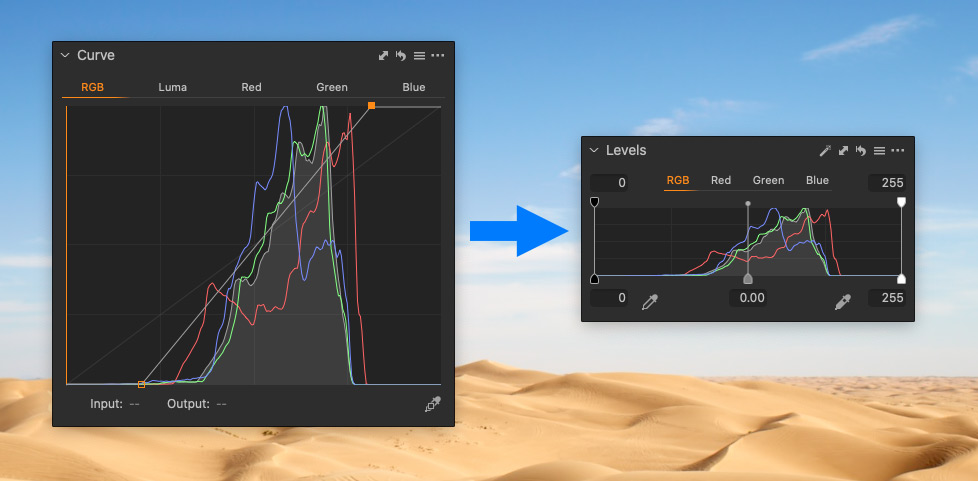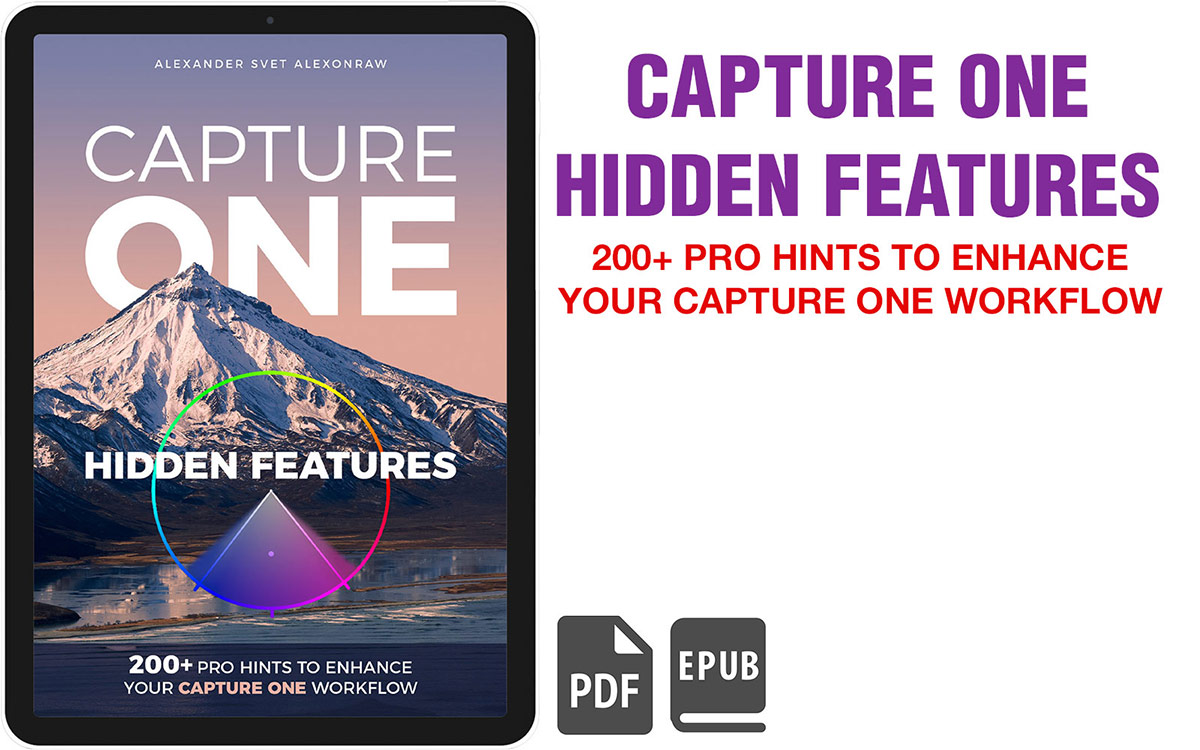Capture One offers a wide variety of tools to work with. Still, it’s not quite evident which of them should be applied first, what tools go next, and which adjustments are designed to finish up RAW-processing?
Let’s dig into this topic and try to find out the right order of applying tools in Capture One. In our research, we’ll use all that we know about Capture One and… common sense!
Capture One Processing Pipeline
Capture One engine processes your adjustments in the sequence determined by its internal processing pipeline. Paul Steunebrink has done a great job on reverse engineering it, and we now know what is happening under-the-hood of Capture One.
I’m sure you have noticed this internal order by yourself: Curves never change Levels histogram, but Levels correction always affects Curves histogram.


So, how important is this order? Should one always follow it?
I use a five-step workflow that balances these features of Capture One engine and image processing common sense. Tools within each step can be used in free order unless I don’t mention otherwise
Step I. Primary adjustments
- Base Curve and ICC camera profile
- Lens Correction
- Composition tools (Crop, Rotation, Keystone)
Primary adjustments are always applied first because they impact both your image perception and other Capture One tools on the engine’s level. For instance, Crop can significantly affect your image in general as well as modify Levels and Curve histograms:

Thus, cropping an image at the end of processing might require re-adjusting some tools.
Also, it makes sense to apply Lens Correction before Keystone because distortion correction can affect Keystone adjustments.
Step II. Basic tools
- White Balance
- Exposure (all the sliders)
- Dehaze
- HDR
- Clarity
- Vignetting
I highly recommend adjusting WB, Exposure, HDR, and Dehaze before moving to other tools. Apart from the fact that all these tools affect histograms, they have a strong visual impact on your image. It’s pretty pointless to color grade your image without proper White Balance.
Still, it’s always up to you. For example, sometimes, you might need to adjust Levels first because only correct black and white points can reveal what to do with the image.
Just keep in mind that you might need to re-adjust Levels again after other corrections.
Step III. Levels and Curves
If you need to adjust Levels and Curves, you should always begin with Levels. The reason is rather simple: Levels affect Curve histogram, making it way easier to work with.
Now, it’s time to adjust color!
Step IV. Color
There is no strict order for these tools except for 3-way Color Balance (Shadow, Midtone, Highlight).
Capture One engine applies Color Balance on top of all the other adjustments. Try it yourself – there is no way to fully desaturate an image with 3-way Color Balance correction!

That’s why it makes sense to adjust Color Balance at the end of processing.
Step V. Retouching
Finally, I switch to retouching only when all the adjustments are made. The thing is that retouching creates additional “layers” with information on your image. Every new adjustment triggers the recalculation of this information and slows down the processing speed. That’s why there is nothing wrong with retouching before the main processing; it’ll just require more processing power to calculate all the further actions.

I’ve created a PDF file with all five steps of processing for my patrons so that you can download it and use it in your work.
Become my patron, and you’ll immediately get access to this PDF and:
- Unique Style Brushes
- Dynamic Symmetry Grids for Capture One
- Patron-exclusive tutorials
$9+ pledge members receive unique styles for Capture One every month!
What to do with layers?
Capture One processing pipeline applies to layers as well.
The best practice is to make all the necessary editing on the background and then switch to layers following the same logic of tools.
Capture One Hidden Features eBook
Capture One Hidden Features is a collection of more than 200 pro hints to improve your Capture One workflow, structured into an easy-to-read book.
You can download four chapters from the Capture One Hidden Features ebook free of charge:
- 3. Must-Have Shortcuts
- 14. Hidden Features of Layers
- 27. The Power of Mask Inversion
- 38. Automation with Macros
Simply subscribe to the AlexOnRAW newsletter by entering your email in the form below. After subscribing to the newsletter, you’ll immediately receive the four chapters from the book. Also, you’ll regularly get a friendly newsletter with free Capture One tutorials, image editing tips and tricks, and news from Capture One community.



